Selecting the right screw for the job is second nature for the time served craftsman, however it can be a very difficult thing to achieve if you are not experienced and do not know how to navigate the plethora of choices that you have.
In this DIY project you will learn all about the different types of screw head, the types of thread and also all the different parts of a screw.
Selecting the Right Type of Screw
We recommend that you use our 3 step process for selecting the right type of screw for the job that you are doing:
- Choose the right type of screw: For the material that you are using. If you are unsure about this, then have a look at our project all about the types of screws that have been designed for different materials to be fixed. There’s a handy table to help you select the right screws quickly
- Select the right size screw: For the job or project you are doing. This can be confusing, particularly with the different sizes being quoted both in Imperial and Metric measurements. For guidance through converting from metric to imperial (and vice versa) have a look at our project of screw sizes
- Pick the right screw features: Even if you have the right screw and at the right length there are a variety of options that are available to choose from, such as the coating, thread, head and drive of the screw. Picking the right one can save time and effort, and ensure that the screw will last. This project explains all these options and which you should choose
The Parts of a Screw
The different parts of a screw are the head, neck, thread and tip. Each of the different parts in itself has several different options such as the type of screw head, type of drive and type of thread.
It is important to understand the parts of a screw and what each part is for. We will review these parts and discuss the different options below.
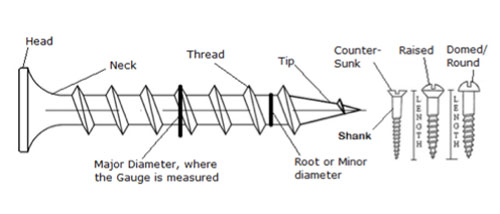
The parts of a screw
Types of Screw Head
The Screw head provides two main functions; firstly it is the stopping point for the screw once it has been driven on to the surface that you are fixing. The second is to house the drive, or the means by which force is applied to drive the screw in (or remove it, if required). They are generally the part that is seen once the job is completed, so consideration should be given to the aesthetics of the screw head, if this is relevant.
| Silhouette of Screw Head | Name(s) of Screw Head | Common Uses |
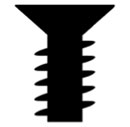 |
Flat Head or Counter Sunk Screw | Designed so that the screw sits flush with the surface being fixed, so that the head will not catch. The head will need to be countersunk, find out more here |
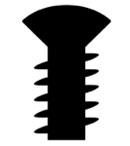 |
Raised or Oval Head Screw | This is a combination of the counter sunk and domed head. They are countersunk but also the top of the head protrudes above the surface. They are largely used as a decorative feature |
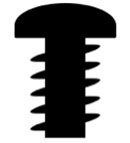 |
Domed, Round or Pan head screws | These are probably the most common types of screws heads, along with counter sunk. They provide a larger surface area for the screw to “stop” on the surface bring fixed. These are ideal for a solid fix where the is no need for the screw head to be flush to the surface of the fixed material |
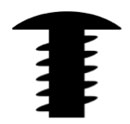 |
Truss or Flat Head Screws | These are wide yet low profile heads which provide a large surface area on top of the fixed material, without protruding too far |
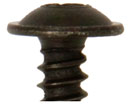 |
Flange Head Screw | These provide a wide base and large surface area, while also providing a sturdy head for transfer of force through the drive. The flange means that a flat washer is not generally required with these screw heads |
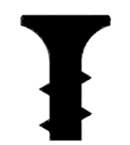 |
Bugle Head Screw | This is a variation of the counter sunk screw head, but the under surface of the head is curved, like a bugle. This reduces damage to plasterboard reducing tearing of the paper, so is typically found on drywall screws |
There are even more heads that are available, but all are a variation or combination of these following basic shapes:

More Screw Heads: (a) pan, (b) dome (button), (c) round, (d) truss (mushroom), (e) flat (countersunk), (f) oval (raised head) – Image courtesy of Wikipedia
The wide range of heads means that there is always an appropriate head for most jobs. If the load is very large or the surface that is being fixed is soft then a wider head with a large surface area should be used. Countersinking generally (if done properly!) leads to a neater finish and is often used in home improvement projects.
The larger the head the more force that can be transferred from the drive; if the screw will need more force or torque to get in into the material you are fixing then you will need a larger head. Often in this situation a pilot hole is used to reduce this force needed. Find out more here in our countersinking project that also covers how to drill pilot holes.
Types of Screw Drive
The “drive” part of the screw is in the screw head which transfers the force or torque from the screw driver to the screw, turning it and driving it into the material being fixed. For more information on screw drivers, both hand and powered have a look at our types of screwdriver project.
Here are the most common types of screw drives that are used. There are many more but these tend to be for more specialist uses. These are the types you’ll encounter in the home more commonly:
| Image of Screw Drive | Names of Screw Drive | Comments |
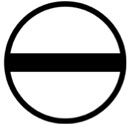 |
Slotted | This is the traditional drive for a screw and designed for a flat head or slotted screw driver. Simple and easy to use, and without this type of drive no one would be able to open paint pots! The lack of centring means that the screwdriver bit can slip (‘cam-out’), especially when using a powered driver |
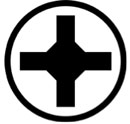 |
Phillips Screw Drive – PH | This is a simple cross shape drive which affords more surface area to turn the screw which reduces the forced needed to turn the screw. The Phillips drive is designed to “slip” the driver out when too much force is applied which prevents the screw head breaking off. This does mean that the driver can slip and strip the head. Now really only used in North America |
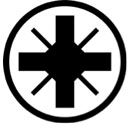 |
Pozi Drive – PZ | This is similar to the Phillips drive, but improved as it has a less pronounced cross drive, which reduces the slippage while allowing the extra force to be applied. A Phillips screw driver can be used with a Pozi, although a drive with a Pozi drive would be better so as not to strip the head. The Pozi drive is become one of the most popular in the UK and Europe, replacing the Phillips almost entirely |
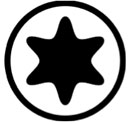 |
Torx Drive or “Star” Drive – T and TX | A torx drive increases the amount of surface area so that it is easier to turn the screw, and the slippage is reduced. Much higher force transfer can be achieved than with the drives described above. There are a range of tamper resistant version of the torx drive. They come in different sizes from T5 to T55 |
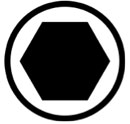 |
Hex Socket Drive (Hex Interior) | The head of the screw has a recessed hexagon into which a hex, Allen key or hex screw driver can be used The shape makes it easy to insert and turn a driver, particularly for small screw heads. It also provides large surface area for transferring the force |
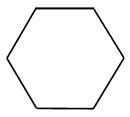 |
Hex Drive (Hex Exterior) | The hex drive allows the use of sockets and spanners for tightening and loosening the screw (or bolt). There is a large contact surface area so large amounts of force can be applied |
There are a great many more different types of screw drive available and most come with a tamper resistant version also. The tamper resistant version has been adapted so that they can only be turned with the specialist tool or screw driver, which are less commonly available.
Here is a more comprehensive list of the other types of screw drive that are available:
 |
Frearson |
 |
Double-square |
 |
One-way |
 |
Square |
 |
Triple square XZN |
 |
Security Torx TR |
 |
Robertson |
 |
Polydrive |
 |
Tri-Wing |
 |
12-point flange |
 |
Spline drive |
 |
Torq-set |
 |
Security hex socket (pin-in-hex-socket) |
 |
Double hex |
 |
Spanner head (Snake-eye) TH |
 |
Clutch A and G |
 |
Bristol |
 |
Pentalobe |
All above images are courtesy of Wikipedia, to find out more about each type of drive head, see the total list of screw drive head types here.
For each of these types of screw drives you need the right driver head in order to turn it. In the UK and Europe for most DIY and home improvement applications you will typically only use slotted or pozi drives on a regular basis.
Many of these drives are restricted to specific uses or specific geographies. For example the square recess or Robertson drive is now virtually defunct in UK and Europe, but still commonly used in North America. The same applied with the Phillips drive, which has been replaced by the Pozi drive in Europe.
Cam Out – when speaking to screw and screw driver boffins, they will talk about “Cam Out”. This is the name given to when the screw driver head or bit slips out of the screw. The design on the drive in the head of the screw is usually largely focused on avoiding it. Cam Out is bad because it wastes time and effort re-centring the driver before continuing screwing, and also during cam out the screw head tends to get damaged.
Types of Thread
The threads of a screw are the ridges that spiral up the shank of the screw, which drive it into the material when they are turned. The thread can be an external one (often called “male”) or an internal one (often known as the ”female”). Internal threads are seen on the inside of nuts, where a bolt (with an external thread) is screw into. When discussing screws we are referring to External Thread. Broadly speaking here are two different types of Thread:
- Machine Screw Threads: These types of thread are designed to be screwed into a pre-drilled matching (internal) thread. These threads need to be highly accurate as they must match the thread into which they will be screwed. These tend to be finer threads or the “turns” are closer together
- Non-Machine Threads: These types of threads are those that you see on screws and generally form their own tread in the material they are being screwed into. These are the types of screw that are most commonly used in DIY and Home Improvement
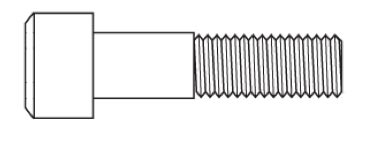
A Machine Screw
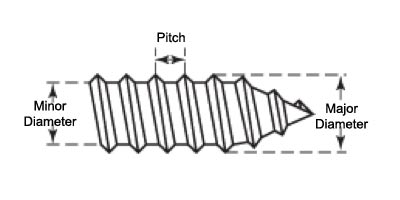
Measurements and dimensions for the size of a screw thread
There is a great deal of theory about the thread of screws which we will not go into to here, but you can find an excellent detailed description here on Wikipedia.
The threads vary in a number of ways which have important impacts on the materials that you might be joining. Here are a number of the most common variations:
Course Threads Versus Fine Threads
As we mentioned above finer threads tend to be used with machine threaded screws, but the courser they get the less likely they are to become cross threaded or the easier they will catch when being screwed in. The finer the thread, the finer the adjustment that is possible when tightening.
Courser threads are normally used for wood and timber, particularly soft woods, but they can be used for steel with smaller thicknesses. The courser the thread the quicker it will be to install as they drive into the material more quickly. Finer threads will be used on denser materials such as hardwoods.
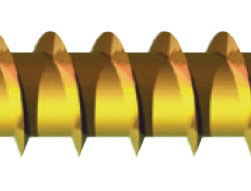
Course Screw Thread
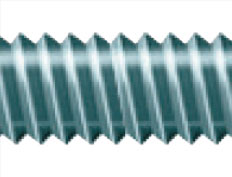
Fine Screw Thread
Single, Twin and Hi-Low Threads
There are a range of configurations for the threads which can be used. Here are some of the more commonly used in DIY and home improvement:
Single Screw Threads
The most common type of thread is a single thread, sometimes called a single start thread. These screws have a single helix of thread running up the screw. They are cheaper to produce and very effective.
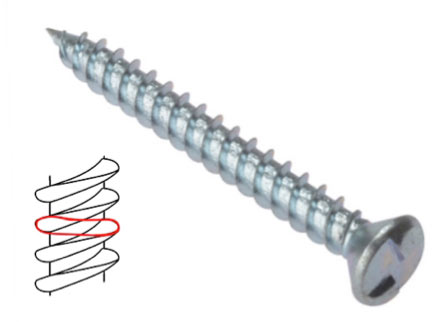
A Single Screw Thread – Image courtesy of wonkeedonkeetools.co.uk
Twin Screw Threads
A Twin Screw is one that has two spirals of threads running up the screw. They are often called Double Start Screws as the thread starts in two places.
This affords more purchase on the material being fixed to so that the screw can be driven in more quickly. As a result the pitch (the angle of the thread) is often larger to allow the screw to be driven in (or removed) more quickly.
Due to the extra thread they will hold the material even more securely, although they are more expensive. They are typically used with softer materials such as softwood.
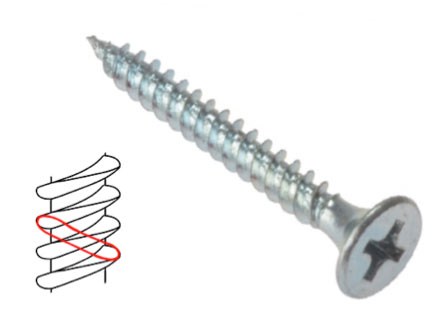
A Twin or Double Start Screw Thread – Image courtesy of wonkeedonkeetools.co.uk
Hi-Lo Screw Threads
Hi-Lo (or High-Low) threads are twin screw threads, but where one of the threads is lower than the other. The idea is to provide a screw with the bite and drive speed of a twin thread but which is less likely to split the material that is being screwed. A Hi-Lo thread is recommended when screwing plastics and other material that can split easily. The extra thread makes the screw hold better than a conventional single thread screw.
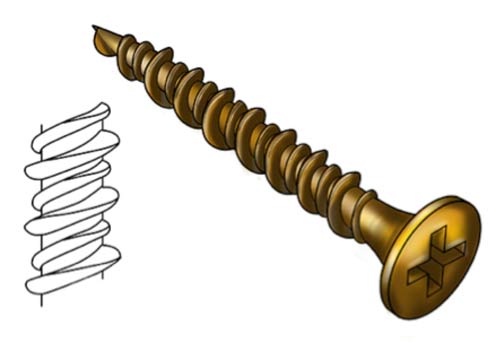
A Hi-Lo Screw Thread – Image courtesy of wonkeedonkeetools.co.uk
Serrated Thread
Some manufacturers provide screws with a serrated thread, which allows the thread to cut through the material being screwed more easily, requiring less force to make the fixing and potentially saving time.
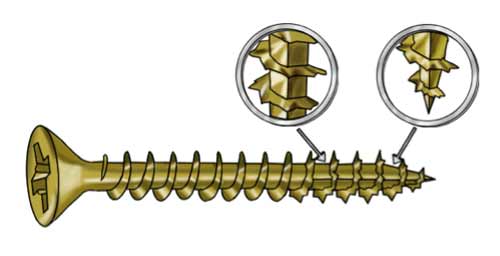
A Serrated Screw Thread – Image courtesy of wonkeedonkeetools.co.uk
Type U or Hammer Drive Thread
This kind of thread is used on Hammer Fixings or Frame Fixings. These are not true screws in the sense that they will be screwed into the material, but they are fixings that are hammered in and the thread turns the fixing into the material when struck by a hammer.
For more information about this have a look our video on using Hammer Fixings.
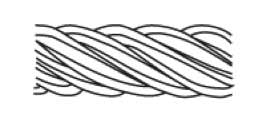
A Hammer Drive Thread
Types of Screw Points or Tips
The point of the screw is the tip which first enters the material being screwed. There is a huge range of types of screws tips available, all with different characteristics. To make it easier to understand we have grouped them in to 3 main categories below.
Thread-forming
These are screws that create their own thread in the material that is being drilled by pushing into it, rather than “drilling” in to it. The often require a pilot hole, but sometimes you don’t have to have one. They are called Tapping Screws in North America.
As it pushes through the material if forms a very strong fix and it is possible to remove and re-insert the screw time and again successful with a secure fix. As it pushes through the material rather than cutting through it this puts more stress on the screw.
Main Types of Thread Forming Screws
- AB Point: These points are for heavy sheet metal or wood screws. They have a sharp point that pierces the material so that the thread will catch
- B Point: B tips are found in machine thread screws and are for metal, plastic and plywood, where a pilot hole has been drilled. They are often most effective for shallow holes
- Super Sharp Point: Often called a needle or gimlet point this is a sharper version of the AB point. They are idea for timber, mdf, plastic and light gauge metal
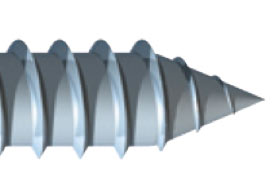
AB point screw tip
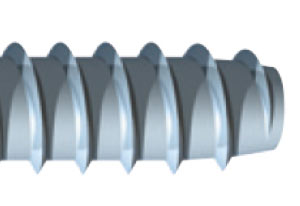
B point screw tip
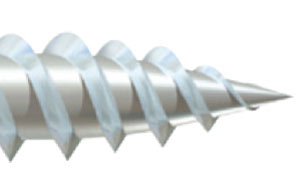
Super sharp point screw tip
Thread-cutting Screw Tips
A thread cutting tip has a point that is designed to cut and remove some of the material while it is inserted, rather than simple being pushed in.
This greatly reduces the strain of the screw and allows it to be inserted more easily, but the material is cut weakening the hold the screw with ultimately have. If the screw is removed and re-inserted it will not hold so well and it will cut the old thread away.
Main types of Thread Cutting Screw Tips
Type 17 Point: They are sometimes called slash points. This point has a flute or slot that is design to cut away the material that you are screwing into rather like a drill bit. This allows the screw to be driven in without pre-drilling a pilot hole and it will reduce the chances of the material splitting. These commonly found of wood and decking screws
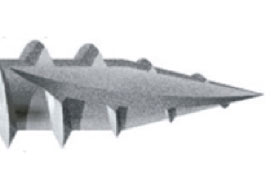
Type 17 point screw tip
Self-Drilling Screw Tips
Self drilling tips have what is effectively a drill bit on the point of the screw. This drills a pilot hole in the material while the screw is being fixed. Some even have “wings” that widen the hole so that the thread does not catch on it. These are specifically designed for joining wood to metal.
The big advantage is that it will save you time as there is no need to drill a pilot hole and they are supposed to hold two different materials together more securely. They are relatively new so they are not common place in DIY circles, partly because they are a little more expensive too. They do require a lot of force to be applied when drilling or fixing
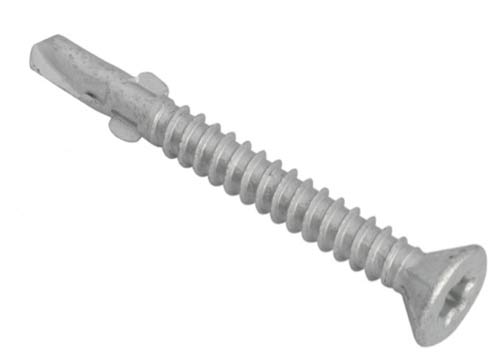
Self drilling screws
The point of the screw will largely be determined by the type of material that the screw is designed to be used on, therefore when purchasing screws, one does not need to worry too much about this.
It is important to ensure that you select the right screw for the job, so try using the handy table to select the right type of screw in our project here.
Common Material Types for Screws
Screws that are used in a Home Improvement role will almost certainly be made of metal (steel typically), and therefore they need to be coated for their own protection and to allow them to be inserted more easily. The coating and material they’re made of will depend on the location where they are designed to be used, and weighed against the cost of producing them.
Here is a list of the most common finishes or coatings that are used in a household environment, either internally or externally:
- Plain Finish Screws: These are screws that have no coating or finish. If they are steel screws they will generally have been treated with an oil coating, but this is not an effective corrosion protection. It will increase their shelf life. Stainless Steel, Brass and non-metallic screws will not be coated as the material used should have sufficient corrosion protection. Typically screws which have not been coated will not be used externally.
- Corrosive Protection Coatings for Screws: In order to make the screw last longer they are coated in the vast majority of cases nowadays. Here’s a description of the most common types of coating used:
- Zinc Plating: This is one of the cheapest and most effective corrosion protection coatings for screws. It is applied mechanically or using electroplating and results in a bluish tint to the screw. The abbreviation that is used to describe this coating is ZP. To provide even more protection a chemical passivation is applied to the zinc coating. This is a chemical chromate that results in a yellow colour and a harder surface. This screw finish is often abbreviated to “ZYP” or Zinc and Yellow Passivated.
- Galvanised: This is another form of Zinc plating, where the screws or fixings are dipped into molten zinc, then spun to ensure an even coating across the whole surface. It is more effective than an electroplated finish, but it is rougher so cannot be used on all but the roughest of screws and more typically found on nails. A galvanised finish is often wax coated to make the fixing easier to use/insert
- Decorative and Secondary Coatings:Often screws are coated in order to improve their decorative appearance, as well as to reduce corrosion. Here are a selection of the most common decorative finishes used in household applications:
- Brass Electo Base: This is a brass finish that is applied by electroplating
- Black Japanned Screws: These screws are covered with a black enamel which can be used in black fittings and will provide corrosion resistance
- Chrome Screws: These screws are copper screws which have been electroplated with Chrome. They provide a very hard and highly shinny surface, which is used in bathrooms or where there is likely to be high levels of condensation.
It is possible to electroplate screws with a range of metals depending on the finish you require. Tin, Bronze, Nickel, Copper and a range of oxidised “antique” finishes can be found if you are looking for something a little unusual.
Choosing the Right Screw for the Job
Choosing the right screw for the job can be a daunting prospect with all the choice that is out there. Different manufacturers refer to different features in different way, and are always inventing new and better feature, whether they are really needed or not!
While we have gone into a lot of detail here about the different parts of a screw, most of these features will be included in the straight forward selection that you make on the type of screw, so you should not worry about these too much. Have a look at our project on selecting the right type of screw for more (simple to follow) information on this.

